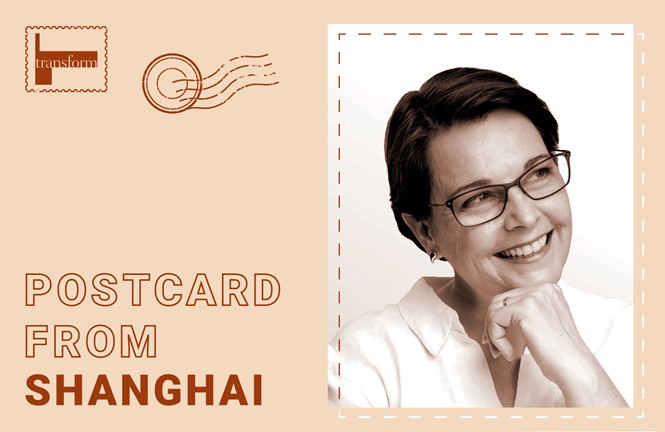Postcard from Shanghai

Kirsten Johnston, founder and CEO at independent design firm JWDK, discusses with Transform the branding scene in Shanghai, how the city’s culture informs her work and the project she is most proud of.
After moving to Shanghai, how long did it take for you to fully get to grips with the Chinese market? And what have you found to be the biggest challenges?
It’s almost ten years since I moved to Shanghai and I’m still getting to grips with the Chinese market! Everything in China moves at supersonic speed so there is little chance to pause and gather your thoughts without a new trend sweeping through and changing the game. This pace impacts every facet of the branding process which is why we place a lot of emphasis on conducting our own research for each project. One of the biggest challenges in this market is staying relevant (for clients and customers) and finding the ‘new’ in every project. This is why it’s important for our team to be based in China, fully immersed in the market.
Have you found there to be something distinct about brand design in Shanghai?
Shanghai is one of the more unique cities in China that has been heavily influenced by inbound foreigners over the years. Because of its multi-cultural past, brand design in Shanghai has more of an ‘international edge’ compared to other Tier 1 cities such as Beijing, Shenzhen or Guangzhou. Shanghai is seen to be the city that brings in most of the influence from around the world which is still quite important to brands operating in China. We have clients from all over China who appreciate our international approach to branding even though a deep understanding of local culture is also a mandatory requirement.
How does Shanghai’s history and culture inform your work?
Being based in Shanghai, with mostly Shanghainese staff, we have a good sense of the city’s history and culture. This helps us a lot for Shanghai-based projects, such as the place brands for Rockbund and Hong Shou Fang, where we needed to find a positioning for the brand that would really touch the hearts of local people. So many of our projects are about linking the past with the present and knowing how young people today respond to local nostalgia is important when creating the new.
When working on urban placemaking projects, how have the demands in Shanghai differed to that of other cities?
Great question! Shanghai is generally more experimental with new, highly creative place activation ideas compared with other cities, but it doesn’t take long for other cities to observe, mimic and adapt Shanghai’s successes locally. The acceptance of age-old Western concepts, such as alfresco dining, was innovated in Shanghai 20 years ago at Xintiandi who refused to accept the belief that ‘Chinese people don’t like to eat outside.’ Now the pavements are brimming with cafe chairs and tables. Shanghai’s creativity is starting to rub off though. We are seeing a lot more creativity and cool ideas being trialled in Chengdu, Beijing and Guangzhou, driven by the younger generations.
While working in China, which brand design project has filled you with the most pride?
Almost every project has been a joyful cultural journey for us which we are super proud of! However, our recent work for Longfu Temple in Beijing has been one of our stand-out success stories. Not only did it recently win three gold Transform Awards but it will also feature as a brand design case study in the upcoming Sixth Edition of Alina Wheeler and Rob Meyerson’s Designing Brand Identity publication. As a Shanghai-based agency, we pride ourselves in designing for local markets in China and we were able to deliver a brand for Beijing that carries the weight of their local culture yet is somehow fresh and new.













